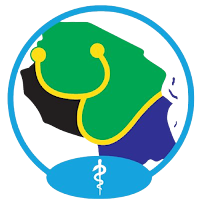h2cm: Original purposes and 21st century additions
Listed below are the four reasons that prompted Brian Hodges to create Hodges' model in the early-mid 1980s, these being to support:
- reflective practice (Moon, 2004; Jasper, 2006) ;
- holistic care (Brooker and Waugh, 2007);
- curriculum development;
- bridging the theory – practice gap. (Doherty, 2009)
 Perhaps in the next few years it would be timely for researchers to revisit the original stimuli and consider afresh the role of Hodges' model within nursing theory and practice and beyond. I believe the relevance of the model grows not because of the constant need for the big picture, but the need to represent and consider new dichotomies and challenges. To the original four then we might add:
Perhaps in the next few years it would be timely for researchers to revisit the original stimuli and consider afresh the role of Hodges' model within nursing theory and practice and beyond. I believe the relevance of the model grows not because of the constant need for the big picture, but the need to represent and consider new dichotomies and challenges. To the original four then we might add:- To inform the socio-technical application of information and communications technologies in health and social care;
- To conceptually ground (domain relate) and integrate the 4Ps of PROCESS, PURPOSE, PRACTICE, POLICY in theory and practice;
- To provide a universal conceptual framework to conjoin all multidisciplinary teams across the 4Cs of COMMUNICATION, COLLABORATION, CO-ORDINATION, CONTINUITY and COMPLEXITY*;
- To inform research in what may be termed ‘cogeographics’ the fusion of conceptual spaces and visualization in the humanities - social sciences.
References:
Brooker, C., Waugh, A. (2007) Foundations of Nursing Practice: Fundamentals of holistic care, Mosby.
Doherty, C. (2009) A qualitative study of health service reform on nurses’ working lives: Learning from the UK National Health Service (NHS), International Journal of Nursing Studies,46,8,1134-1142.
Jasper, M. (2006) Reflection, Decision-making and Professional Development (Vital Notes for Nurses), Blackwell.
Moon, J.A. (2004) A Handbook of Reflective and Experiential Learning: Theory and Practice, Routledge.
*I can count really ;-)



 orcid.org/0000-0002-0192-8965
orcid.org/0000-0002-0192-8965

